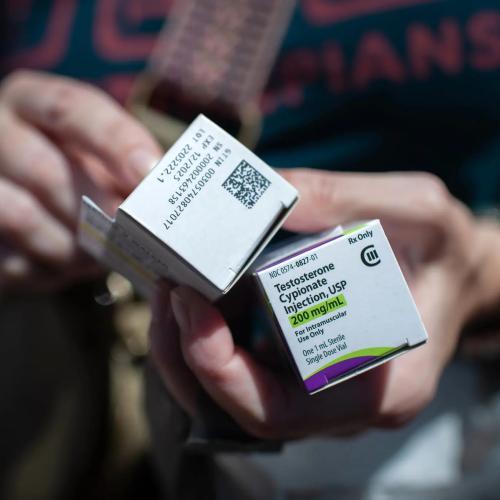Financial News Articles
Below are key excerpts of revealing news articles on financial corruption from reliable news media sources. If any link fails to function, a paywall blocks full access, or the article is no longer available, try these digital tools.
For further exploration, delve into our comprehensive Banking Corruption Information Center.
Somebody owes us $20 trillion. "Inside Job," a riveting, eye-opening, infuriating documentary about the financial collapse of 2008, coolly presents a prosecutor's brief against the culprits who engineered the greatest economic crisis since the Great Depression. They occupy both sides of the legislative aisle, corporate boardrooms, Ivy League faculty lounges and bank headquarters. They made money — sometimes obscene amounts of it — while rigging a monetary meltdown that left middle-class taxpayers holding the bag, and thousands of less-fortunate former homeowners holding cardboard signs beside freeway on-ramps. This is no dry economics lesson; it is a vital wakeup call. The presentation is articulate and rigorously factual, presented in six chapters, from "How We Got There" to "Accountability." The financial earthquake was not only entirely avoidable, but was utterly predictable given the steady erosion of scrutiny of financial markets here and abroad. Reducing state monitoring under the Reagan administration set the stage for the savings-and-loan crisis and the collapse of the junk-bond market. But that was a luau compared with what lay ahead. Successive administrations, Democratic and Republican alike, heeded advisers pushing for further deregulation, leading to WorldCom, Enron, the dot-com bubble and the 2008 panic. Many of those laissez-faire advocates were prominent academics receiving sizable consulting fees to testify in antitrust cases and in Congress on Wall Street's behalf.
Note: For lots more from reliable sources on the long history of criminal and corrupt practices of major financial powers and regulatory bodies, click here.
As George H. Painter was preparing to retire recently as one of two administrative law judges presiding over investor complaints at the Commodity Futures Trading Commission, he issued an extraordinary request: Please don't assign my pending cases to the other judge. [The CFTC oversees trading of the nation's most important commodities, including oil, gold and cotton.] Painter said Judge Bruce Levine ... had a secret agreement with a former Republican chairwoman of the agency to stand in the way of investors filing complaints with the agency. "On Judge Levine's first week on the job, nearly twenty years ago, he came into my office and stated that he had promised Wendy Gramm, then Chairwoman of the Commission, that we would never rule in a complainant's favor," Painter wrote. "A review of his rulings will confirm that he fulfilled his vow. Judge Levine ... forces pro se complainants to run a hostile procedural gauntlet until they lose hope, and either withdraw their complaint or settle for a pittance, regardless of the merits of the case." Levine was the subject of a story 10 years ago in the Wall Street Journal, which said that except in a handful of cases in which defunct firms failed to defend themselves, Levine had never ruled in favor of an investor. Gramm [wife of former senator Phil Gramm (R-Tex.)], was head of the CFTC just before president Bill Clinton took office. She has been criticized by Democrats for helping firms such as Goldman Sachs and Enron gain influence over the commodity markets. After leaving the CFTC, she joined Enron's board.
Note: For lots more from reliable sources on government corruption, click here.
This is the story of how some of the richest people in the world Goldman, Deutsche Bank, the traders at Merrill Lynch, and more have caused the starvation of some of the poorest people in the world. At the end of 2006, food prices across the world started to rise, suddenly and stratospherically. Within a year, the price of wheat had shot up by 80 per cent, maize by 90 per cent, rice by 320 per cent. In a global jolt of hunger, 200 million people mostly children couldn't afford to get food any more, and sank into malnutrition or starvation. There were riots in more than 30 countries, and at least one government was violently overthrown. Then, in spring 2008, prices just as mysteriously fell back to their previous level. Jean Ziegler, the UN Special Rapporteur on the Right to Food, calls it "a silent mass murder", entirely due to "man-made actions." Through the 1990s, Goldman Sachs and others lobbied hard and the regulations [controlling agricultural futures contracts] were abolished. Suddenly, these contracts were turned into "derivatives" that could be bought and sold among traders who had nothing to do with agriculture. A market in "food speculation" was born. The speculators drove the price through the roof.
Note: Some researchers speculate that the global elite are aware that alternative energies will eventually replace oil, which has been a prime means of control and underlying cause of many wars in recent decades. So as a replacement for oil, the elite and their secret societies are increasingly targeting control of the world's food supply through terminator crops which produce no seed, and through the patenting of seeds.
Even the worlds most savvy stock-market giants (e.g., Warren E. Buffett) have warned over the past decade that derivatives are the fiscal equivalent of a weapon of mass destruction. And the consequences of such an explosion would make the recent global financial and economic crisis seem like penny ante. But generously lubricated lobbyists for the unrestricted, unsupervised derivatives markets tell congressional committees and government regulators to butt out. While banks all over the world were imploding and some $50 trillion vanished in global stock markets, the derivatives market grew by an estimated 65 percent, according the Bank for International Settlements. BIS convenes the worlds 57 most powerful central bankers in Basel, Switzerland, for periodic secret meetings. Occasionally, they issue a cry of alarm. This time, derivatives had soared from $414.8 trillion at the end of 2006 to $683.7 trillion in mid-2008 - 18 months time. The derivatives market is now estimated at $700 trillion. Whats so difficult to understand about derivatives? Essentially, they are bets for or against the house - red or black at the roulette wheel. Or betting for or against the weather in situations in which the weather is critical (e.g., vineyards). Forwards, futures, options and swaps form the panoply of derivatives. Credit derivatives are based on loans, bonds or other forms of credit. Over-the-counter (OTC) derivatives are contracts that are traded and privately negotiated directly between two parties, outside of a regular exchange. All of this is unregulated.
Note: Though not from one of the top U.S. newspapers, this incisive article lays bare severe market manipulations that greatly endanger our world. The entire article is highly recommended. $700 trillion is equivalent to $100,000 for every man, woman, and child in the world! Do you think the financial industry is out of control? For lots more powerful, reliable information on major banking manipulations, click here. For a powerful analysis describing just how crazy things have gotten and giving some rays of hope by researcher David Wilcock, click here.
On top of everything Lehman Brothers did before it collapsed in 2008, nearly toppling the financial system, it now seems that it was aggressively massaging its books. A new report on the Lehman collapse, released last week ... would leave anyone dumbstruck by the firms audacity and reminded of the crying need for adult supervision of Wall Street. The 2,200-page report [finds that] Lehman engaged in transactions that let it temporarily shift troubled assets off its books and in so doing, hide its reliance on borrowed money. The maneuvers ... made the firm appear healthier than it was. [The author, Anton R. Valukas, a former federal prosecutor,] wrote that Richard S. Fuld Jr., Lehmans former chief executive, was at least grossly negligent, and that Lehman executives engaged in actionable balance sheet manipulation. According to the report, rating agencies, government regulators and Lehmans board of directors had no clue about the gimmicks. The result is that we were all blindsided. And we could be blindsided again. Congress is not even close to passing meaningful regulatory reform. The surviving banks have only gotten bigger and more politically powerful. If the Valukas report is not a wake-up call, what would be?
Note: The Lehman report is described in detail here. For revealing information showing how the US Treasury Department continues to fight against a much-needed audit of the Federal Reserve, click here. For a great collection of revealing reports from reliable sources on the hidden realities behind the financial crisis and government bailouts of the biggest financial corporations, click here.
Embroiled in its debt crisis and looking for any avenue to bolster tax receipts [Greece] has done the unthinkable it has made [cash, in euros] illegal for transactions over 1,500 euros. Of course, larger credit- or debit-based electronic transactions over 1,500 will still be denominated in euros. However, electronic transactions clearly require infrastructure and limit personal freedom. From Reuters: From 1. Jan. 2011, every transaction above 1,500 euros between natural persons and businesses, or between businesses, will not be considered legal if it is done in cash. Transactions will have to be done through debit or credit cards. It seems wrong for the Greek state to dictate how cash euros can be used. In fact, its surprising that the EU-endorsed plan would allow Greece to control euro usage at that level. Despite the fact that the reform bill is a piece of an approved EU plan to help improve Greek tax revenue and reduce deficit, it seems to go too far in curtailing personal liberty. How much is a government willing to punish its own citizens for using too much of their own legal tender in an otherwise legal transaction?
Note: What gives any government the right to limit cash transactions? And why is the EU approving this unusual measure? Could this be part of a hidden agenda to push the public towards a cashless society?
PAUL SOLMAN, NewsHour economics correspondent: As the Federal Reserve moved rapidly and radically last year to prevent what it feared was an economic meltdown, it bailed out some institutions, but not others, forced mergers, [and] created hundreds of billions of dollars. The net result: increased suspicion of the Fed itself. That's nothing new. The 1913 act of Congress that established America's central bank was ... a compromise between government ... and private banking interests, which owned the 12 regional Fed branches. [All along,] some Americans have been suspicious of the Fed for operating above politics, too close to bankers, and behind closed doors. Simply Google "Federal Reserve." You encounter everything from skepticism to fear of conspiracy. NARRATOR: With the power to regulate the money supply is also the power to bring entire economies and societies to its knees. DONALD KOHN, Federal Reserve vice chairman: We bring information to bear from the private sector, from foreign governments and foreign central banks that they tell us in confidence about what's going on in their businesses. WILLIAM GREIDER, author, "Secrets of the Temple": You could say, "We have to have our meetings in secret because things will be said that are national security secrets, but we'll vet the transcript and release it four weeks later." Why not do that? SOLMAN: A House bill ... would give the Government Accountability Office the right to audit the Fed's interest rate decisions. Chairman Bernanke opposes it as compromising the Fed's independence.
Note: If you look at the top of any U.S. currency, you will see the words "Federal Reserve Note." U.S. dollars are issued and controlled by the Federal Reserve, which is privately owned, though subject to minimal federal oversight. To see just how much control the Federal Reserve has over the issuance of U.S. currency, see their webpage at this link. For lots more on hidden manipulations of the Federal Reserve, click here.
President Barack Obama's proposal for a regulatory overhaul of the financial industry vastly expands the reach of the Federal Reserve, yet fails to make policy-makers more accountable for their actions. Critics argue that the new legislation fundamentally misses the problems that led to the financial crisis. It was a lack of enforcement by supervisors, they say, not insufficient rules, that fostered a cowboy culture of rampant risk-taking on Wall Street. "Obama is letting the Fed and everyone else off the hook by saying that the problem was with the regulations and not the regulators," said Dean Baker, co-director of the Center for Economic Policy Research in Washington. "If regulators know that even if they totally fail on the job, they will face no career consequences, then at some future point, when there is a choice between confronting the financial industry or just going along, the regulators will just go along," said Baker. Some feel uncomfortable with a broader role for the Fed primarily because of the Fed's closeness to the banking sector. The Fed is not technically a public entity. Each of the Fed's 12 branches are overseen by a nine-member board of directors, two-thirds of whom are elected by the bankers in the district. "The Federal Reserve has massive conflicts of interest that make it ill-suited for its present regulatory functions and certainly for an expanded regulatory reach," said Robert Auerbach, a professor of public affairs at the University of Texas at Austin. "The officials leading the Fed today preside over an organization that is run in substantial part by the bankers they regulate."
Note: For empowering insight into the historic roots of the Federal Reserve's unaccountability, click here.
The Federal Reserve's balance sheet is so out of whack that the central bank would be shut down if subjected to a conventional audit, Jim Grant, editor of Grant's Interest Rate Observer, told CNBC. With $45 billion in capital and $2.1 trillion in assets, the central bank would not withstand the scrutiny normally afforded other institutions, Grant said. "If the Fed examiners were set upon the Fed's own documents ... to pass judgment on the Fed's capacity to survive the difficulties it faces in credit, it would shut this institution down," he said. "The Fed is undercapitalized in a way that Citicorp is undercapitalized." Grant said he would support legislation currently making its way through Congress calling for an audit of the Fed. Moreover, he criticized the way the Fed has managed the financial crisis, saying the central bank's target rate should not be around zero. "I think zero is the wrong rate for almost any economy," Grant said, adding the Fed has "embarked on a vast experiment in moral hazard. Interest rates are the traffic signals in a market economy, and everything's green. ... You have to wonder whether these interest rates are the right clearing rate or rather they are the imposition of a central bank." Amid a disparity between analysts predicting there will be no rate hikes soon and the fed funds futures indicating tightening by the end of the year, Grant said he thinks the Fed indeed will begin raising rates as inflation creeps into the picture. Fed funds futures have fully priced in as much as a half-point rise in the target rate from its current range of zero to 0.25 percent. "If the hairs on the back of your neck stand up when there's too much unanimity of opinion, then one begins to worry about this," he said. "The Fed proverbially has been late."
Note: For an astonishing five-minute video clip of a Congressional hearing where the Inspector General of the Fed acknowledges she knows almost nothing about trillions of dollars missing from the Fed, click here. For many more important reports shedding light on the hidden realities of the economic crisis, click here.
Gillian Tett [is the author of] Fool's Gold: How the Bold Dream of a Small Tribe at J.P. Morgan Was Corrupted by Wall Street Greed and Unleashed a Catastrophe. Tett is a respected business journalist at the Financial Times. Tett successfully pieces together the colorful backstory of the bank's work to win acceptance in the market for its brainchild, turning credit derivatives "from a cottage industry into a mass-production business." With the benefit of hindsight, we know that while these inventions were intended to control risk, they amplified it instead. This novel idea turned noxious when applied broadly to residential mortgages, a game that the rest of Wall Street later entered into with gusto. We learn in deep detail about not only how collateralized debt obligations are assembled but also their many iterations. Perhaps it's noteworthy that Tett's book begins when JPMorgan had the face-value equivalent of $1.7 trillion in derivatives on its books. Today that number has jumped to a mind-boggling $87 trillion. Part of that portfolio includes almost $8.4 trillion in credit derivatives, more than Bank of America's (BAC), Citi's, and Goldman Sachs' (GS) holdings combined.
Note: So JP Morgan has $87 trillion in derivatives, a mass market it helped to create. That is greater than the GDP for the entire world! To verify this, click here. For a New York Times review of this revealing book, click here.
U.S. taxpayers need to know the risks behind the Federal Reserves $2 trillion in lending to financial institutions because the public is now an involuntary investor in the nations banks, according to a court filing by Bloomberg LP. The Fed refuses to name the borrowers, the amounts of loans or assets banks put up as collateral under 11 programs, arguing that doing so might set off a run by depositors and unsettle shareholders. The largest U.S. banks have tapped more than $125 billion in government aid under the Troubled Asset Relief Program in the past seven months. Assets, including loans and securities, on the Fed balance sheet totaled $2.09 trillion as of April 9. Banks oppose any release of information because that might signal weakness and spur short-selling or a run by depositors, the Fed argued in its March 4 response. The release of the information can fuel market speculation and rumors, including a drop in stock price and a run on the bank, the Fed said. Bloomberg replied yesterday that these speculative injuries relate only to the reactions of customers, shareholders and other members of the public, not to competitors use of the borrowers proprietary information to their advantage, the exception to disclosure under the FOIA law. Government loans, spending or guarantees to rescue the U.S. financial system total more than $12.8 trillion since the international credit crisis began in August 2007, according to data compiled by Bloomberg as of March 31. The total includes about $2 trillion on the Feds balance sheet.
Note: For an extensive archive of key reports on the hidden realities of the Wall Street bailout, click here.
The Federal Deposit Insurance Corporation was set up 76 years ago with the important but simple job of insuring bank deposits. Now, because of what could politely be called mission creep, its elbowing its way into the middle of the financial mess as an enabler of enormous leverage. In the fine print of Treasury Secretary Timothy F. Geithners plan to lend as much as $1 trillion to private investors to help them buy toxic assets from our nations banks, youll find some details of how the F.D.I.C is trying to stabilize the system by adding more risk, not less, to the system. Its going to be insuring 85 percent of the debt, provided by the Treasury, that private investors will use to subsidize their acquisitions of toxic assets. These loans, while controversial, were given a warm welcome by the market when they were first announced. And why not? The terms are hard to beat. They are, for example, nonrecourse, which means that if an investor loses money, he owes taxpayers nothing. Its the closest thing to risk-free investing with leverage! around. But, as weve learned the hard way these last couple of years, risk-free investing is an oxymoron. So where did the risk go this time? To the F.D.I.C., and ultimately, to us taxpayers. A close reading of the F.D.I.C.s statute suggests the agency is using a unique some might call it plain wrong reading of its own rule book to accomplish this high-wire act. Somehow, in the name of solving the financial crisis, the F.D.I.C. has seemingly been given a blank check, with virtually no oversight by Congress.
Note: For a powerfully revealing archive of reports from reliable sources on the hidden realities of the financial bailout, click here.
The Federal Reserve refused a request by Bloomberg News to disclose the recipients of more than $2 trillion of emergency loans from U.S. taxpayers and the assets the central bank is accepting as collateral. Bloomberg filed suit Nov. 7 under the U.S. Freedom of Information Act requesting details about the terms of 11 Fed lending programs, most created during the deepest financial crisis since the Great Depression. The Fed responded Dec. 8, saying its allowed to withhold internal memos as well as information about trade secrets and commercial information. If they told us what they held, we would know the potential losses that the government may take and thats what they dont want us to know, said Carlos Mendez, a senior managing director at New York-based ICP Capital LLC. The Fed stepped into a rescue role that was the original purpose of the Treasurys $700 billion Troubled Asset Relief Program. The central bank loans dont have the oversight safeguards that Congress imposed upon the TARP. Total Fed lending exceeded $2 trillion for the first time Nov. 6. It rose by 138 percent, or $1.23 trillion, in the 12 weeks since Sept. 14, when central bank governors relaxed collateral standards to accept securities that werent rated AAA. There has to be something they can tell the public because we have a right to know what they are doing, said Lucy Dalglish, executive director of the Arlington, Virginia-based Reporters Committee for Freedom of the Press.
The government's financial bailout will be the most expensive single expenditure in American history, potentially costing around $7.5 trillion -- or half the value of all the goods and services produced in the United States last year. In comparison, the total U.S. cost of World War II adjusted for inflation was $3.6 trillion. The bailout will cost more than the total combined costs in today's dollars of the Marshall Plan, the Louisiana Purchase, the Korean War, the Vietnam War and the entire historical budget of NASA, including the moon landing, according to data compiled by Bianco Research. It remains to be seen whether the government's multipronged approach to bail out banks, stimulate spending and buy up mortgages will revive the economy, but as the tab continues to grow so does concern over where the government will find the money. Monday the government guaranteed an additional $306 billion to bail out Citigroup, and today Treasury Secretary Henry Paulson pledged $800 billion to make credit more available to consumers and small businesses, and to buy up mortgages from Fannie Mae and Freddie Mac. Congress last month allocated $700 billion for an emergency bailout of some of Wall Street's most storied firms by purchasing their troubled assets. The funds allocated through the Troubled Assets Relief Program are but a small part of the government's overall bailout spending. Bailout programs also include a Federal Reserve plan to buy as much as $2.4 trillion in short-term notes called commercial paper that began Oct. 27, and an FDIC plan to spend $1.4 trillion to guarantee bank-to-bank loans that commenced Oct. 14, according to Bloomberg News, which first compiled the total cost of the bailout.
Note: $7.5 trillion amounts to about $25,000 for every person in the U.S. What's going on here? For many revealing reports on the realities of the Wall Street bailout, click here.
Henry Paulson's speech Wednesday made it pretty clear: The Treasury secretary has seized control of the financial system. "He is absolutely the most powerful person in the country. Maybe the world," says Wall Street accounting expert Robert Willens. The most telling line in his speech came when Paulson was explaining why he did a 180-degree turn with money approved by Congress under the $700 billion bailout bill. Instead of using it to buy troubled mortgage assets from banks, as clearly envisioned, he scrapped that idea and used it to make equity investments in banks. "In consultation with the Federal Reserve, I determined that the most timely, effective step to improve credit market conditions was to strengthen bank balance sheets quickly through direct purchases of equity in banks," he said. If Paulson bothered consulting with President Bush, he didn't mention it. In fact, he didn't even mention the president until the tail end of his speech, when he talked about the global summit Bush is hosting this weekend. I can understand why Paulson wants to distance himself from an unpopular president, especially one who has little facility for complex financial matters. But Bush is [the] president and even President-elect Barack Obama knows there can be only one president at a time. And his last name is not Paulson. In September, when Paulson asked for a $700 billion blank check from Congress to fix the financial markets, he got a lot of blowback. By the time Congress was done with his proposal, it had grown from 2 1/2 pages to more than 450. Yet it now appears that Paulson got the blank check he wanted.
Note: Why doesn't Congress have some say in what is done with this $700 billion? That's over $3,000 for every taxpayer in the U.S. which is being spent with practically no accountability. Is this what democracy looks like? For many key articles revealing the hidden realities of the bailout, click here.
So you thought Barack Obama's victory signaled the death of Reaganomics? Wrong, wrong: Reaganomics is very much alive. In a subtle, bloodless coup, the Reaganomics ideology magically pulled victory out of the jaws of defeat in the meltdown. The magic happened fast and quietly, in the shadows, while you were in a trance, distracted by the election drama. Recently Naomi Klein, author of The Shock Doctrine: The Rise of Disaster Capitalism, framed the issue perfectly: "Has the Treasury partially nationalized the private banks, as we have been told? Or is it the other way around?" The question was rhetorical, the answer painfully clear. In a few weeks Wall Street did the old bait and switch, emerging from an economic and market disaster with new powers, in total control of America. And thanks to Treasury Secretary Henry Paulson's brilliant bailout coup, Reaganomics is now the new "sleeper cell" quietly hidden inside the Obama White House and America's Treasury, where it will be for a long time to come. Listen closely folks: You and your government are and will continue being conned out of trillions. Klein further exposed this insanity in a recent Rolling Stone article, "The New Trough: The Wall Street bailout looks a lot like Iraq, a 'free-fraud zone' where private contractors cash in on the mess they helped create." Paulson's privatization, outsourcing and management of the $700 billion bailout has the exact same Reaganomics ideological, strategic and deceptive footprints that President George W. Bush and former Defense Secretary Donald Rumsfeld used to privatize, outsource and mismanage the costly Iraq War blunder.
Note: For the powerfully revealing article by Naomi Klein mentioned in the article above, click here. Speaking on Tulsa Oklahomas 1170 KFAQ, Senator James Inhofe of Oklahoma (Republican) has revealed that Treasury Secretary Henry Paulson was the source of the threat of martial law in the US if the $700 billion bailout bill was not passed that was exposed on the House floor by Rep. Brad Sherman. For many key articles revealing the hidden realities of the bailout, click here.
"Nothing," [famed economist] Anna Schwartz says, "seems to have quieted the fears of either the investors in the securities markets or the lenders and would-be borrowers in the credit market." The credit markets remain frozen, the stock market continues to get hammered, and deep recession now seems a certainty -- if not a reality already. [Recently, according to Schwarz, Secretary of the Treasury Hank Paulson has] shifted from trying to save the banking system to trying to save banks. These are not, Ms. Schwartz argues, the same thing. In fact, by keeping otherwise insolvent banks afloat, the Federal Reserve and the Treasury have actually prolonged the crisis. "They should not be recapitalizing firms that should be shut down." Rather, "firms that made wrong decisions should fail," she says bluntly. "You shouldn't rescue them. Everything works much better when wrong decisions are punished and good decisions make you rich." How did we get into this mess in the first place? As in the 1920s, the current "disturbance" started with a "mania." But manias always have a cause. "In every case, it was expansive monetary policy that generated the boom in an asset. The particular asset varied from one boom to another. But the basic underlying propagator was too-easy monetary policy and too-low interest ratest. And then of course if monetary policy tightens, the boom collapses." Today's crisis isn't a replay of the problem in the 1930s, but our central bankers have responded by using the tools they should have used then. They are fighting the last war. The result, she argues, has been failure.
Note: Anna Schwarz and Nobel-winner Milton Friedman authored A Monetary History of the United States. It's the definitive account of how misguided monetary policy turned the stock-market crash of 1929 into the Great Depression. The excellent article above mentions that Fed Reserve Chairman Bernanke once said "I would like to say to Milton and Anna: Regarding the Great Depression. You're right, we did it. We're very sorry. We won't do it again." Top bankers and their cronies have been aware of what causes the boom/bust cycle for over 100 years and taken full advantage of it. Try to find one top banker who lost significant money in any bust cycle.
Regulators had long classified a private Swiss energy conglomerate called Vitol as a trader that primarily helped industrial firms that needed oil to run their businesses. But when the Commodity Futures Trading Commission examined Vitol's books last month, it found that the firm was in fact more of a speculator, holding oil contracts as a profit-making investment rather than a means of lining up the actual delivery of fuel. Even more surprising to the commodities markets was the massive size of Vitol's portfolio -- at one point in July, the firm held 11 percent of all the oil contracts on the regulated New York Mercantile Exchange. The discovery revealed how an individual financial player had gained enormous sway over the oil market without the knowledge of regulators. Other CFTC data showed that a significant amount of trading activity was concentrated in the hands of just a few speculators. The CFTC ... now reports that financial firms speculating for their clients or for themselves account for about 81 percent of the oil contracts on NYMEX, a far bigger share than had previously been stated by the agency. That figure may rise in coming weeks as the CFTC checks the status of other big traders. Some lawmakers have blamed these firms for the volatility of oil prices, including the tremendous run-up that peaked earlier in the summer. "It is now evident that speculators in the energy futures markets play a much larger role than previously thought, and it is now even harder to accept the agency's laughable assertion that excessive speculation has not contributed to rising energy prices," said Rep. John D. Dingell (D-Mich.).
Hedge funds and big Wall Street banks are taking advantage of loopholes in federal trading limits to buy massive amounts of oil contracts, ... helping to push oil prices to record highs. The federal agency that oversees oil trading, the Commodity Futures Trading Commission, has exempted these firms from rules that limit speculative buying. The CFTC has also waived regulations over the past decade on U.S. investors who trade commodities on some overseas markets, freeing those investors to accumulate large quantities of the future oil supply by making purchases on lightly regulated foreign exchanges. Over the past five years, investors have become such a force on commodity markets that their appetite for oil contracts has been equal to China's increase in demand over the same period, said Michael Masters, a hedge fund manager who testified before Congress on the subject last month. The commodity markets, he added, were never intended for such large financial players. Commodities have become especially enticing to investors as the credit crisis has roiled other investment opportunities such as stocks and debt-related securities. The recent flood of investment money has transformed the markets for oil, as well as uranium, wheat, cotton and other goods, into a volatile realm that some insiders call the Wild West of Wall Street. Michael Greenberger, a professor at the University of Maryland and former CFTC commissioner, said there were loopholes the agency could close without much effort. "There's smoke here, and the CFTC hasn't wanted to look if there's a fire," he said. "But these are dark markets. They don't even know who's doing the trading."
Note: For revealing reports on financial corruption and criminality from major media sources, click here.
Who rules the world? The rise of nation states produced national ruling classes. It would be odd if the current integration of the world economy did not produce new global elites business people and financiers who run global companies and global politicians who steer supra-national organisations such as the European Union (EU) and the International Monetary Fund. David Rothkopf, a visiting scholar at the Carnegie Endowment for International Peace, argues that these elites constitute nothing less than a new global superclass. They have all the clubby characteristics of the old national ruling classes, but with the vital difference that they operate on the global stage, far from mere national electorates. They attend the same universities. They are groomed in a handful of world-spanning institutions such as Goldman Sachs. They belong to the same clubs the Council on Foreign Relations in New York is a particular favourite and sit on each other's boards of directors. Many of them shuttle between the public and private sectors. They meet at global events such as the World Economic Forum at Davos and the Trilateral Commission or for the crme de la crme the Bilderberg meetings or the Bohemian Grove seminars that take place every July in California. Mr Rothkopf is anything but a crank, and he is right when he says that, these days, the most influential people around the world are also the most global people. He is also admirably ambivalent about his subject. He worries about surging inequality the richest 1% of humans own 40% of the planet's wealth and about the rumbling backlash against so much unaccountable power.
Note: For reliable, verifiable information the secret societies of which the global elite are a part, click here. Superclass: The Global Power Elite and the World They Are Making by David Rothkopf is available here.
Important Note: Explore our full index to revealing excerpts of key major media news articles on several dozen engaging topics. And don't miss amazing excerpts from 20 of the most revealing news articles ever published.












































































